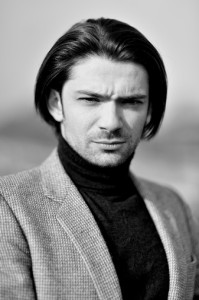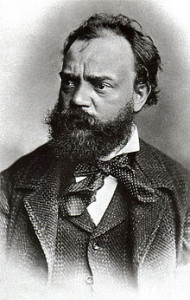For the longest time, I thought that tune was an American folk song, like “Shenandoah,” or even “Sweet Betsy from Pike.” Not so. Instead, it is entirely original and at the heart of From the New World, Symphony No. 9 in E minor by Antonin Dvorak. There’s a lot of commentary about how he wrote it. He lived in New York in 1892. A determined visionary, Jeanette Thurber, wanted to create the National Conservatory of Music, a place where students of any gender, race/ethnicity, or economic background could study with the finest musicians. She really did make it happen and brought Dvorak to lead it. He and most of his family came from Bohemia, staying, with only one return to Europe, until 1895. He enjoyed the African-American music he heard, ragtime, and the nearly authentic Native American music he heard at Buffalo Bill Cody’s extravaganzas. And yet, Dvorak was not a researcher. So, how did this great-hearted symphony come to Dvorak? It is true that he said, “I am now satisfied that the future music of this country must be founded upon what are called the African American melodies,” but the symphony, written in 1893, is definitely his own and written as a European symphony. Dvorak is the de Tocqueville of great music. Just as that young Frenchman came to America and immediately understood what was going on here, Dvorak came to the US and wrote masterpieces which to our ears are our masterpieces expressing a truth about America better than anyone else. It was a truth about who we wish to think we are. On June 1, 2013, The San Francisco Symphony, conducted by Juraj Valcuha, performed it with all the energy, optimism and yearning that propels this great, humane work. Nostalgia for a place that may never have existed, except at the core of our values, entwines with musical invention and insights. Two years later, in 1895, Dvorak wrote Cello Concerto in B minor, Opus 104. The June 1, 

 soloist, Gautier Capucon, played the astonishing concerto with power and understanding. While it is the cello’s piece, the opening movement features a breathtaking horn solo. There is a virtuosic, dancing pace and the introduction of one of Dvorak’s songs which returns near the close. I am sometimes amused and amazed by critics’ commentaries on performances I have attended. One writer in order to praise Capucon mentioned that his playing managed to rise above this old warhorse of the classical repertory. Taking nothing away from Capucon’s masterful performance, one must remember he was performing this particular music, and it is earth shaking music. It opened a magical door to the cello. Allowing us to hear what poetry could come from that instrument, Dvorak pushed the symphonic world into a world of more and different sounds. Hearing it, Brahms said, “Why in the world didn’t I know one could write a cello concerto like this? If I’d only known I’d have done it long ago!” That’s good enough for me. Photos (L to R) G.Capucon, A.Dvorak, J.Valcuha.
soloist, Gautier Capucon, played the astonishing concerto with power and understanding. While it is the cello’s piece, the opening movement features a breathtaking horn solo. There is a virtuosic, dancing pace and the introduction of one of Dvorak’s songs which returns near the close. I am sometimes amused and amazed by critics’ commentaries on performances I have attended. One writer in order to praise Capucon mentioned that his playing managed to rise above this old warhorse of the classical repertory. Taking nothing away from Capucon’s masterful performance, one must remember he was performing this particular music, and it is earth shaking music. It opened a magical door to the cello. Allowing us to hear what poetry could come from that instrument, Dvorak pushed the symphonic world into a world of more and different sounds. Hearing it, Brahms said, “Why in the world didn’t I know one could write a cello concerto like this? If I’d only known I’d have done it long ago!” That’s good enough for me. Photos (L to R) G.Capucon, A.Dvorak, J.Valcuha.